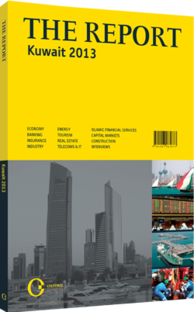Sunshine on my shoulder: Solar projects free up hydrocarbons reserves for export
The climatological argument for the introduction of solar technology to Kuwait has long been established: the Middle East enjoys some of the most favourable solar radiation rates in the world, particularly between March and October, and within the region Kuwait’s solar radiation peak of 8000 Wh per sq metre (Wh/m2) places it at the top of the list in terms of solar potential, followed by the UAE with a solar peak of 7300 Wh/m2. However, while the UAE has become something of a solar pioneer in recent years, Kuwait has been less quick to turn its attention to the potential benefits of this natural resource. Its abundant oil reserves could in theory power the country for several hundred years, and the relative expense of renewable options has until recently provided little incentive for their development. However, as the costs associated with renewable energy technology have decreased, interest in their ability to provide Kuwait with an alternative energy source has risen, and the question of solar energy has become more prominent.
SOLAR SOLUTIONS: In October 2011, Eyad Ali Al Falah, assistant under-secretary for technical services at the Ministry of Electricity and Water (MEW), announced a plan to generate 10% of the nation’s electricity from renewable sources by 2020 – an ambitious target that exceeds the 7% target set for the same year by Abu Dhabi. The development of a solar power industry in Kuwait brings two obvious benefits that its proponents view as deal clinchers: as a renewable energy source that has a peak performance potential during the summer months, it represents a useful response to the problem of meeting a peak load requirement inflated by widespread air conditioner usage during the hot season; and, as with the liquefied natural gas imports that Kuwait has already commenced, solar power has the potential to free up crude and its associated products for exports.
The technology also brings a range of ancillary benefits, not least the heightened degree of energy security that would result from a more diverse national energy base. The low-carbon nature of solar technology is also a good fit with the more environmentally conscious energy policies that are beginning to emerge across the region. Finally, a well-developed solar infrastructure may carry important strategic implications in a future global energy market in which demand has moved away from hydrocarbons and towards renewables. Kuwait’s neighbour, Saudi Arabia, has already signalled that its solar programme may be as much a response to this possible scenario as it to domestic concerns: in 2010, its minister of petroleum and mineral resources revealed that “Saudi Arabia aspires to export as much solar energy in the future as it exports oil now”.
THEORY TO PRACTICE: As Kuwait sets about establishing its solar industry, it has recourse to the expertise of an international industry that has developed photovoltaic and concentrated solar power electricity to commercial scale. In adapting the continuously evolving technology for local use it may also turn to an existent framework for research and development: both the Kuwait Institute of Scientific Research (KISR) and Kuwait University have established solar research programmes (see analysis). In 2013, however, a more practical stage is set to begin with the MEW’s installation of solar panels at its headquarters.
The project, which is expected to be extended to the Ministry of Public Works and thereafter other public buildings, will produce about 1 MW of electricity to be utilised for lighting and other utilities. More importantly for the development of the nation’s solar sector, Kuwait is moving closer to establishing a solar input to the national grid. In October 2012 the deadline for qualifications to bid for a solar plant in the west of the country was reached. Current plans for the site provide for a 280-MW power station, of which 60 MW will be solar, with the tendering process expected to be competed in 2013. The MEW has also indicated that it is to enter into a joint venture with the KISR to build a 70-MW solar and wind plant, the construction contract of which will also be put up to tender in 2013.
You have reached the limit of premium articles you can view for free.
Choose from the options below to purchase print or digital editions of our Reports. You can also purchase a website subscription giving you unlimited access to all of our Reports online for 12 months.
If you have already purchased this Report or have a website subscription, please login to continue.

